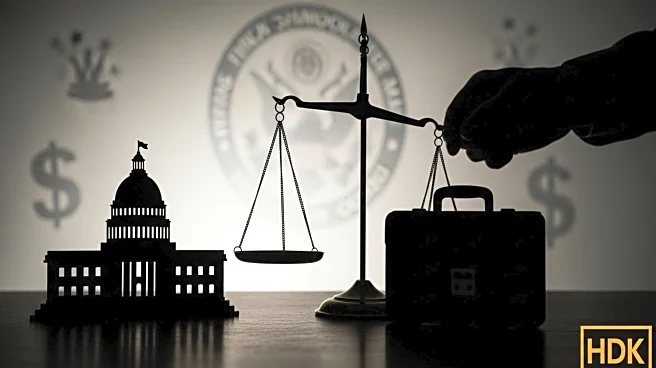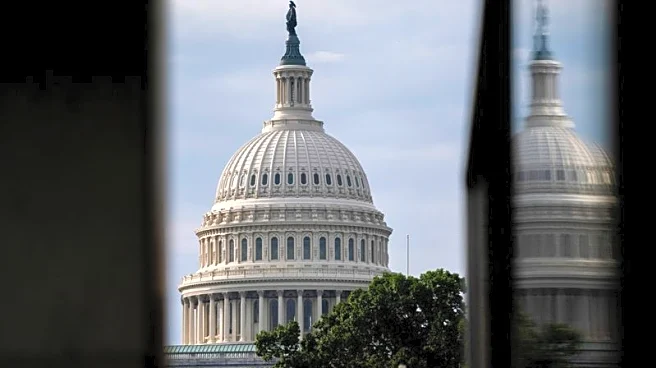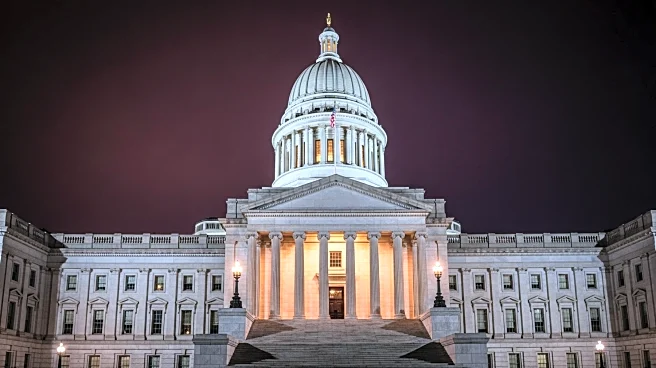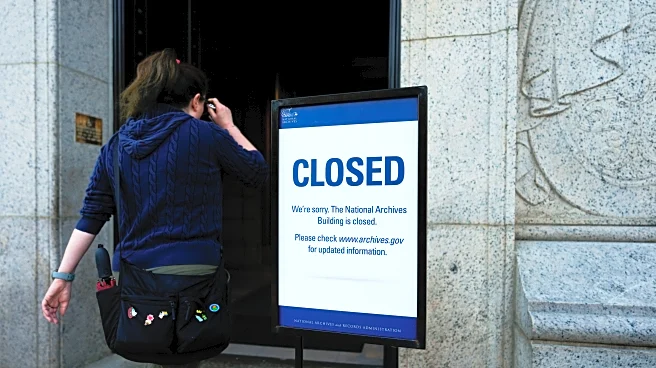What's Happening?
The Trump administration has announced plans to furlough approximately 550,000 federal employees if Congress does not act to prevent a government shutdown. This figure represents less than a quarter of the federal workforce, a notably lower percentage compared to previous shutdowns. The administration intends to keep the Internal Revenue Service fully operational using funds from the 2022 Inflation Reduction Act. In contrast, the Defense Department plans to furlough about 45% of its civilian employees. The Office of Management and Budget (OMB) has some discretion in determining which employees are furloughed, with those funded through non-annual appropriations or essential for life and property protection continuing to work. Agencies like the Smithsonian Institution plan to use prior-year funds to remain operational initially, but may close if the shutdown persists.
Why It's Important?
The potential government shutdown could have significant implications for federal operations and employees. While some agencies will continue critical functions, others may see a halt in services, affecting public access to government resources. The furloughs could disrupt the livelihoods of federal employees, although they are guaranteed backpay. The decision to keep the IRS operational highlights the administration's prioritization of revenue collection and financial oversight. The shutdown could also impact public perception of government efficiency and the political landscape, as blame is directed at congressional Democrats for the funding impasse. The situation underscores the ongoing challenges in federal budget negotiations and the potential for political fallout.
What's Next?
If the shutdown occurs, agencies may need to adjust their furlough plans based on the duration and evolving needs. The OMB has advised agencies to prepare for potential layoffs, which would require a 60-day notice period. The Government Accountability Office may review agency actions for compliance with the Anti-Deficiency Act, as seen in past shutdowns. The political ramifications could influence future budget negotiations and legislative priorities. Stakeholders, including federal employees and the public, will be closely monitoring developments and potential resolutions to the funding crisis.












